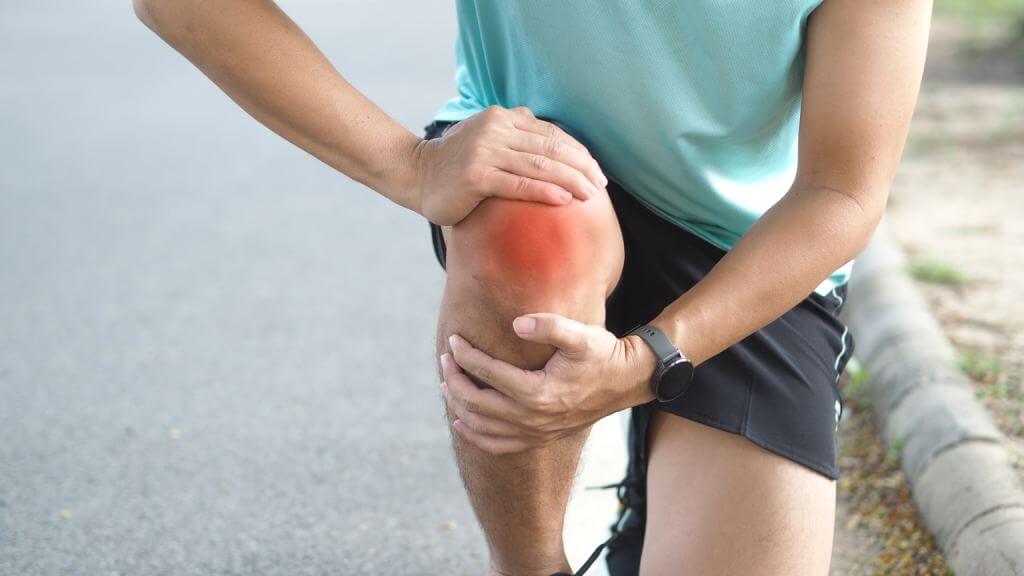What is Runner’s Knee?
“Runner’s Knee” is a common term for Patellofemoral Pain Syndrome (PFPS), a condition that causes pain around or behind the kneecap (patella). Despite the name, it’s not exclusive to runners—anyone who places repeated stress on the knee joint can develop it. It typically presents as a dull, aching pain that worsens with activities like running, climbing stairs, squatting, or even sitting for long periods.
Causes of Runner’s Knee
Runner’s Knee is primarily caused by improper movement of the kneecap over the femur (thigh bone). This can be due to:
- Muscle imbalances (e.g. weak quadriceps or glutes)
- Poor biomechanics (e.g. overpronation of the feet)
- Overuse or sudden increase in activity level
- Inadequate warm-up or stretching
- Improper footwear
- Tight hamstrings, IT band, or calf muscles
Prevalence
- General Population = 22.7% peoples having patelo-femoral pain syndrome (PFPES)
- Affects up to 25% of all knee injuries in sports medicine clinics, making it one of the most common overuse injuries among active individuals.
- 28.9% prevalence in adolescents and young adults (ages 15–35), especially those engaged in high-impact or repetitive knee activities.
- Women are twice as likely to develop Runner’s Knee compared to men, often due to anatomical and biomechanical differences. In Female athlete the prevalence is 22.7%.
- 7.2% of individuals with sedentary jobs report aggravated symptoms, especially with prolonged sitting or poor posture.
- Common among runners, cyclists, and gym-goers, basketball players, soccer players, volley ball plyers, tennis ball players with incidence rates increasing during periods of training, high intensity, overload or improper biomechanics.
- The incidence is roughly 15-30% among runners, with a lifetime risk as high as 22-40% in the general population who participate in sports or physical activity.
Early Symptoms to Watch For
- Dull, aching pain in or around the kneecap
- Pain that worsens when going up/down stairs, squatting, or sitting for long periods
- A grinding or clicking sound in the knee
- Knee giving way or feeling unstable
Recognizing symptoms early can prevent progression and support quicker recovery with proper intervention.
How Physiotherapy Can Help
Physiotherapy is a key component in the effective treatment of Runner’s Knee. Here’s how a physiotherapist can help:
- Accurate Assessment and Diagnosis
A physiotherapist will perform a detailed biomechanical analysis, identify contributing factors (e.g. muscle weakness, joint stiffness, poor alignment), and rule out other causes of knee pain. - Personalized Exercise Program
Treatment often includes strengthening the quadriceps, gluteal muscles, and core to improve knee stability. Stretching tight muscle groups like the hamstrings, calves, and IT band is equally important. - Manual Therapy
Techniques such as soft tissue mobilization, patellar mobilization, or myofascial release may be used to reduce pain and improve joint mobility. - Gait and Posture Correction
Physiotherapists assess running and walking mechanics to correct any abnormalities contributing to knee stress. This might include training to adjust foot strike pattern or cadence. - Education and Activity Modification
Patients are guided on how to modify their activities without completely stopping them. This includes pacing strategies, footwear advice, and training modifications to prevent recurrence. - Taping and Support
Kinesiology taping or patellar tracking taping techniques may be used to help align the kneecap and reduce pain during movement. - Dry Needling:
Reduces myofascial trigger points, easing muscle tension around the knee, especially in the quadriceps and iliotibial band.
Improves knee joint mobility and flexibility, contributing to better patellar tracking and reduced pain during activity.
Enhances local blood flow, promoting faster healing of soft tissue structures involved in overuse injuries.
Provides short-term pain relief, making it easier for patients to engage in corrective exercises and physiotherapy.
Effective when combined with rehab exercises, rather than as a standalone treatment, for long-term functional improvement.
Conclusion
Runner’s Knee is a manageable condition when addressed early and correctly. Physiotherapy not only treats the symptoms but tackles the root causes, helping you return to pain-free movement and activity safely. Whether you’re a runner, an athlete, or someone simply trying to stay active, consulting a physiotherapist is a proactive step toward recovery.


